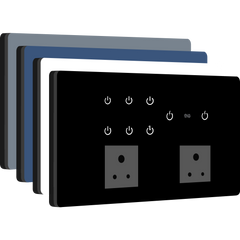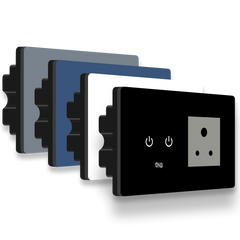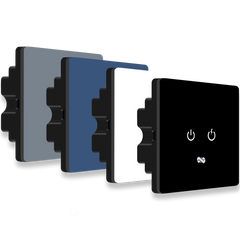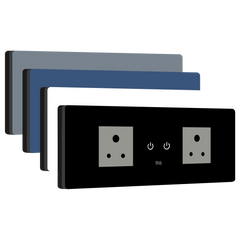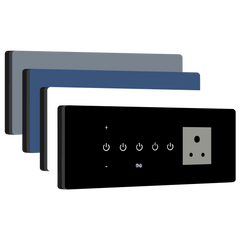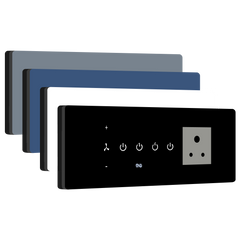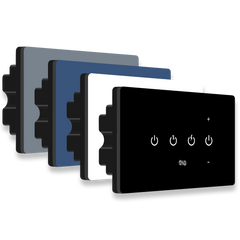Dual-Band WiFi: What It Is and Why It’s Important for Your Smart Switches
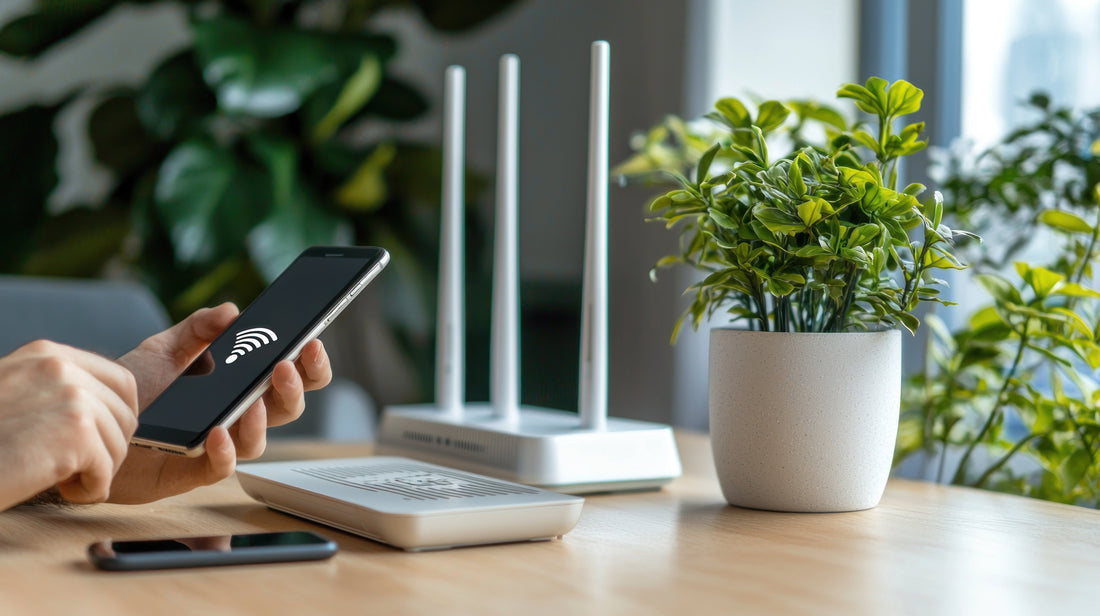
1. Definition
Dual-Band WiFi refers to a wireless network that operates on two frequency bands: 2.4 GHz and 5 GHz. These two bands offer different benefits and speeds, making them ideal for various types of devices and internet activities. A dual-band router provides flexibility, allowing smart devices like switches to connect to either band depending on signal strength and the type of data being transmitted.
For smart switches, dual-band WiFi is particularly valuable because it ensures stable connectivity and faster performance, even in homes with multiple devices and high internet usage.
2. Key Takeaways
-
Dual-band WiFi enables your devices to connect to either the 2.4 GHz or 5 GHz band, improving performance and reducing congestion.
-
2.4 GHz is great for long-range connectivity but is slower, making it ideal for devices like smart switches that don’t require a lot of bandwidth.
-
5 GHz is faster but has a shorter range, making it ideal for high-bandwidth devices like streaming services and gaming consoles.
- Smart switches benefit from dual-band WiFi by maintaining a stable connection, even when many devices are on your network.
3. Why Dual-Band WiFi Is Important for Smart Switches
Having a reliable WiFi connection is crucial for the seamless operation of smart switches. Here’s why dual-band WiFi is so beneficial:
-
Better Performance: With dual-band WiFi, your devices can connect to the most appropriate band based on your needs. For everyday tasks like controlling lights or setting schedules on your smart switch, the 2.4 GHz band is often sufficient. However, if you're using other devices that require higher speeds (like streaming devices or gaming consoles), the 5 GHz band provides faster access.
-
Reduced Congestion: In many homes, numerous devices are connected to the WiFi network simultaneously. If all devices are on the same 2.4 GHz band, it can lead to congestion and slower speeds. A dual-band router allows devices to be distributed across both bands, reducing interference and ensuring smoother connections for your smart switches.
-
Enhanced Range: The 2.4 GHz band has a longer range than 5 GHz, which helps reach devices located far from the router. In larger homes, some areas may be out of range of the 5 GHz signal but can still connect reliably to the 2.4 GHz band. This flexibility ensures your smart switch stays connected wherever it’s installed.
-
Improved Stability: Dual-band WiFi helps prevent signal drops, which can occur when too many devices are connected to a single band. A stable connection means your smart switch will respond quickly to commands—whether you’re using voice control, a mobile app, or automation schedules.
4. Example/Use Case
Imagine you’ve installed a smart switch in your bedroom and connected it to your home WiFi network. You start by connecting the switch to the 2.4 GHz band, as it offers a longer range and doesn’t require high speeds to function effectively.
Later in the day, while streaming a movie in your living room, you notice your internet speed slowing down. With a dual-band WiFi router, you can move the streaming device to the 5 GHz band for faster speeds. This reduces congestion on the 2.4 GHz band, ensuring both the smart switch and the streaming service perform optimally.
5. Frequently Asked Questions (FAQs)
What’s the difference between 2.4 GHz and 5 GHz?
The 2.4 GHz band offers longer range but slower speeds, ideal for devices that don’t need high bandwidth—like smart switches. The 5 GHz band delivers faster speeds but has a shorter range, making it better for high-performance tasks like streaming and gaming.
Do I need a dual-band router to use a smart switch?
No, smart switches can work with a single-band router. However, a dual-band router provides flexibility and improves performance across multiple connected devices.
Can my smart switch connect to both bands at the same time?
No, each device connects to only one band at a time—either 2.4 GHz or 5 GHz. A dual-band router can help by automatically directing your device to the best band based on signal strength and usage.
How can I ensure my smart switch stays connected to WiFi?
Make sure your router is dual-band, place it centrally in your home for better coverage and connect your smart switch to the appropriate band based on its location and your WiFi strength.
Is dual-band WiFi essential for other smart home devices?
While not essential for every smart device, dual-band WiFi significantly improves performance when multiple devices are online. For homes with many connected gadgets, a dual-band router is highly recommended.

